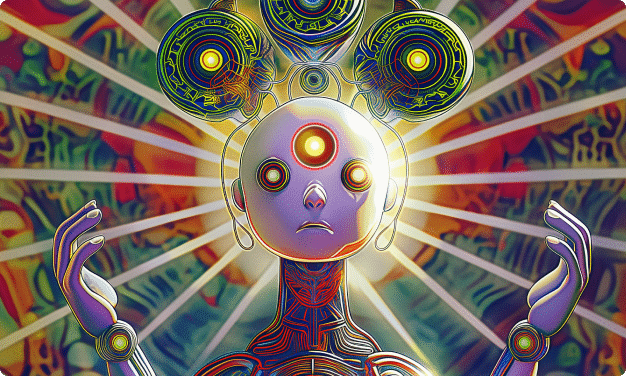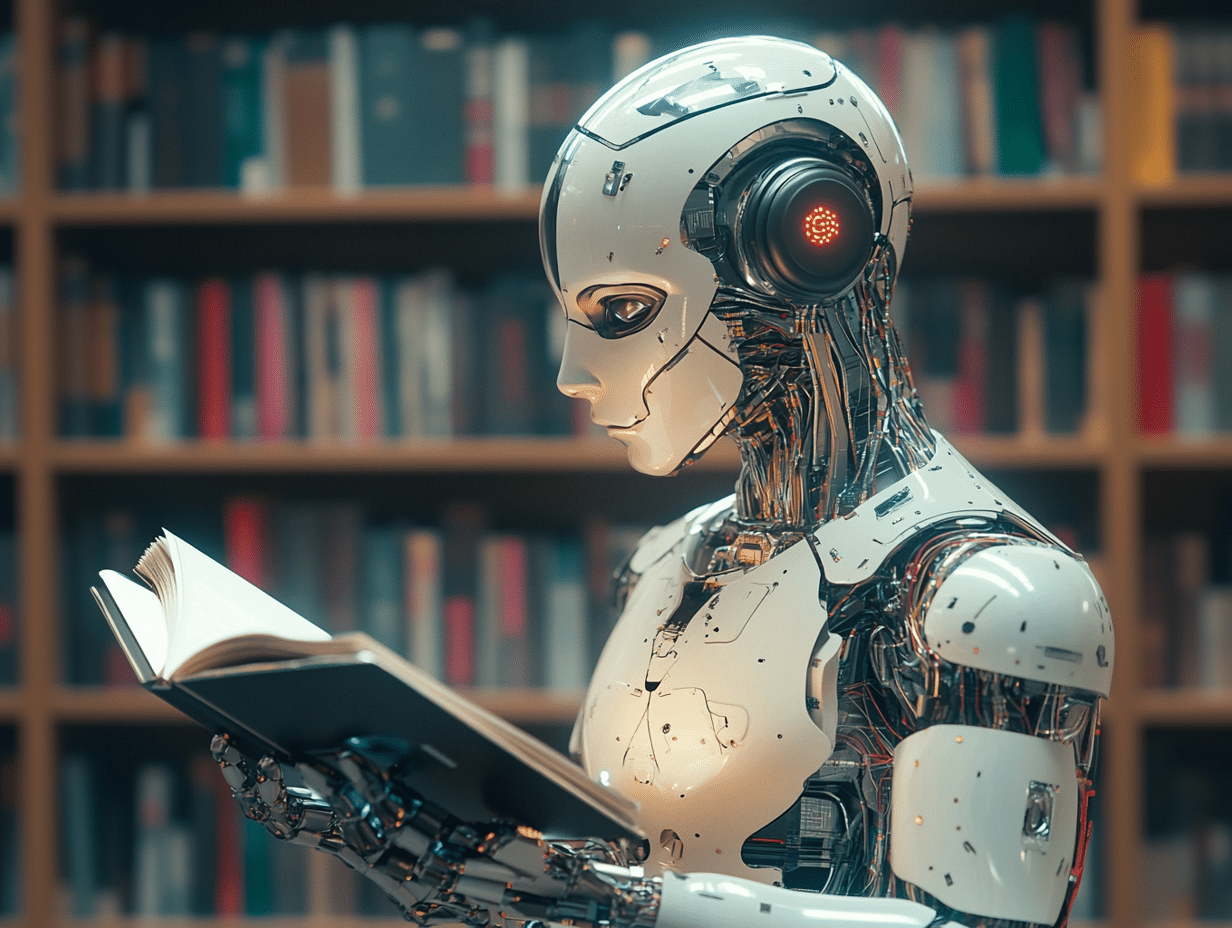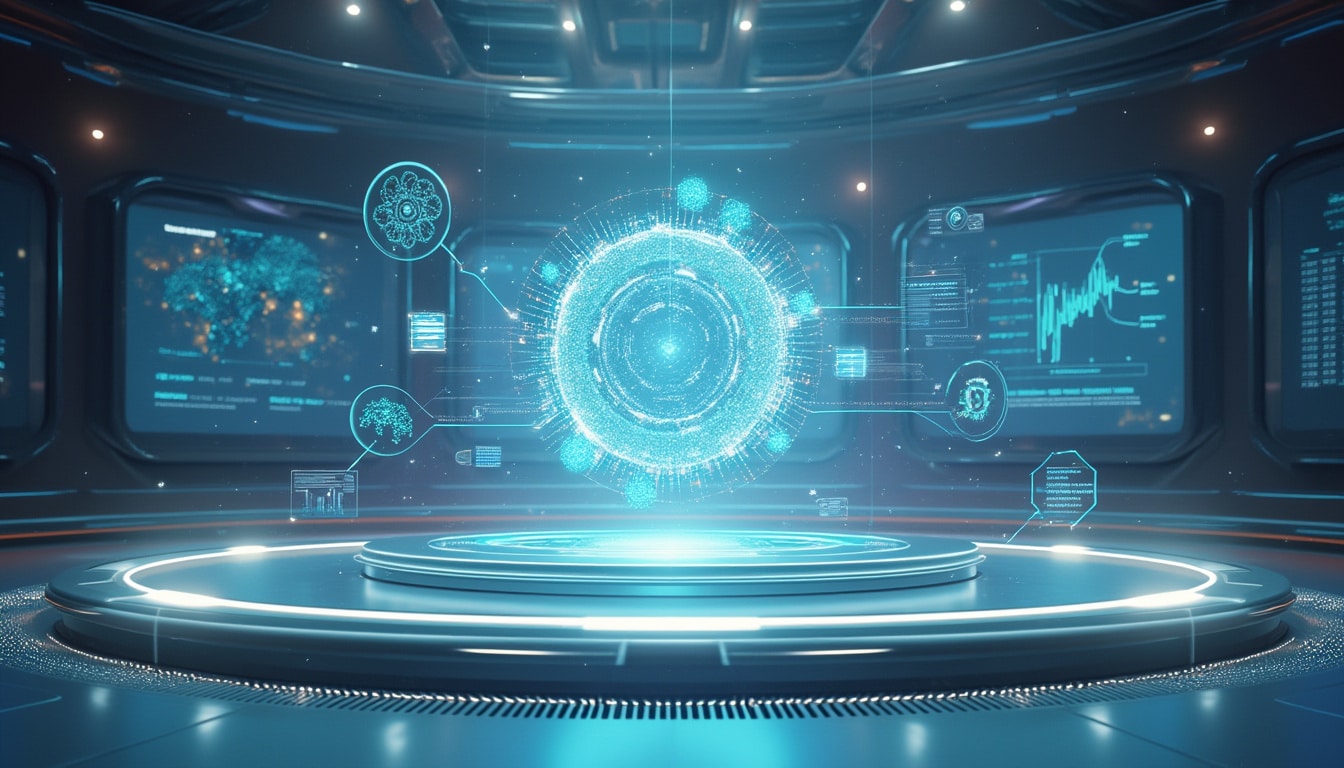Traditional Machine Learning Explained
Traditional machine learning focuses on building systems that can learn from and make accurate predictions based on data. This is characterized by the use of algorithms that are generally less complex than those used in deep learning, making them more interpretable and often requiring less computational power.
These algorithms also tend to excel when working with smaller datasets and can perform well without the need for high-end hardware like GPUs.
Here are the key algorithms used in traditional machine learning:
- Decision Trees: Used to make decisions based on previous data, often visualized as a tree structure, splitting into branches that represent decision paths.
- Support Vector Machines (SVM): Designed for classification tasks, creating a decision boundary, called a hyperplane, which best separates different classes in the data.
- Linear/Logistic Regression: Utilized for binary classification tasks, estimating the probability that an instance belongs to a particular class.
These algorithms find applications across various fields. Decision Trees and SVM are frequently used in financial analysis for credit scoring and stock market predictions, while Logistic Regression is commonly applied in medical fields for disease diagnosis. Linear Regression is used in real estate to predict housing prices based on various features like size, location, and age of the property.
These traditional machine learning algorithms have been instrumental in advancing numerous industries by providing them with the tools to make informed decisions based on analyzing historical data patterns.
Deep Learning Explained
Deep learning is a subset of machine learning and a sophisticated branch of artificial intelligence (AI) that extends the capabilities of machine learning through models that are composed of multiple layers of neural networks.
At the core of deep learning are neural networks that consist of layers of interconnected nodes, or neurons, each capable of performing specific computations. While the concept of neural networks is inspired by the biological neural networks found in the human brain, it’s important to note that the similarities are more thematic than literal. Artificial neural networks are engineered to process data in a manner that allows for pattern recognition and decision-making from large sets of unstructured data, leveraging computational methods that differ significantly from the brain’s biological processes.
By adjusting the connections between these nodes during the training phase, a deep learning model can learn detailed and sophisticated data representations. This ability to automatically extract and learn features from raw data sets deep learning algorithms apart from more traditional techniques, which typically require manual feature extraction.
Deep learning excels in many applications that involve large-scale and complex data such as images, sound, and text. It powers some of today’s advanced AI applications, including image and speech recognition, natural language processing, and autonomous vehicles.
For instance, convolutional neural networks (CNNs) are widely used in image recognition tasks to classify images with high accuracy, while recurrent neural networks (RNNs) and their variants like LSTMs and GRUs are employed in processing sequential data such as language and time series.
The capability of deep learning algorithms to perform these complex tasks by learning from vast amounts of data has led to significant advancements in technology and science, making it a key technology in the push toward more intelligent and autonomous AI systems.
Comparing Deep Learning vs. Traditional Machine Learning
Let’s walk through the main differences between deep learning and traditional machine learning models.
Data Requirements
Deep learning requires vast amounts of data to effectively train its complex models, as it relies on large training datasets to learn and refine its understanding of features directly from the data.
Traditional machine learning, in contrast, can often achieve good results with much smaller datasets. This is because traditional methods focus on utilizing statistical models to learn from data, and extensive feature engineering helps these models perform well even when data is limited.
Therefore, the scale and availability of data can significantly influence the choice between using deep learning and traditional machine learning techniques.
Feature Engineering
Deep learning significantly reduces the need for manual feature engineering, as it leverages its multiple layers to automatically extract and learn the relevant features from raw data. This capability is a major advantage in processing complex and high-dimensional data such as images or audio, where determining useful features manually would be impractical.
In contrast, traditional machine learning heavily relies on meticulous feature engineering to improve model accuracy. AI engineers must manually identify and select the most informative features from the data before training, which can be time-consuming and requires domain expertise, but is key to achieving good performance with simpler models.
Problem Complexity
Traditional machine learning excels with structured, less complex problems where relationships between features are more straightforward, such as predicting housing prices or customer churn. These algorithms thrive on clear, numerical inputs and can efficiently model problems where the underlying patterns are not excessively intricate.
On the other hand, deep learning is particularly suited for tackling more complex issues that involve unstructured data, like image and speech recognition, or natural language understanding.
These problems often feature hidden patterns and abstract relationships that are difficult for traditional models to capture without extensive feature engineering, making deep learning the better choice for handling high complexity.
Hardware Requirements
Traditional machine learning models generally require less computational power, often running efficiently on standard CPUs. This makes them more accessible and cost-effective for many applications, particularly those involving smaller datasets or simpler algorithms.
Deep learning models demand significantly more computational resources, typically requiring powerful GPUs or specialized hardware like TPUs to handle their intensive calculations.
This need for high-performance hardware stems from the large volumes of data and the complex computations involved in training deep neural networks, making deep learning more resource-intensive both in terms of energy and financial cost.
Interpretability
Traditional machine learning models are generally easier to understand than deep learning models. Techniques like decision trees or linear regression allow users to easily understand how inputs are transformed into outputs, making it straightforward to explain decisions and results.
This transparency is crucial in fields like healthcare or finance, where understanding the decision-making process is as important as the accuracy of predictions.
Deep learning models, on the other hand, are often considered “black boxes” because their numerous layers and complex structures obscure the logic behind their decisions. This lack of transparency can make it challenging to fully trust and validate the models’ behaviors and outputs.
Training Time
Training time varies significantly between traditional machine learning and deep learning due to their structural and computational differences.
Traditional machine learning algorithms typically require less time to train, as they often work with smaller datasets and simpler models. This efficiency enables quicker iteration and deployment in practical applications.
Conversely, deep learning models, which consist of multiple layers and complex architectures, typically require greater training time on the same hardware. That said, with wide adoption of powerful GPUs, the training time is comparable to ML, but this increases the overall cost.
Software and Libraries
Traditional machine learning is well-supported by libraries like scikit-learn, which provides tools for data mining and analysis, easily accessible for tasks involving regression, clustering, and classification using simpler algorithms.
For deep learning, frameworks such as TensorFlow and PyTorch dominate, offering extensive capabilities for building and training sophisticated neural networks.
These frameworks support automatic differentiation and are optimized for performance on GPU hardware, which allows for the development of complex models that are essential for tasks involving large-scale and high-dimensional data.
Human Intervention
In traditional machine learning, significant human involvement is necessary for tasks such as preprocessing data, selecting features, and tuning algorithms. This hands-on approach requires domain expertise and understanding of the data to guide the learning process effectively.
Deep learning, however, automates many of these steps, especially feature extraction, reducing the need for manual intervention once the network architecture is defined. However, setting up deep learning models still requires expert knowledge to architect and tune neural networks, particularly in adjusting parameters and choosing the right layers to efficiently learn from data.
Deep Learning vs. Traditional Machine Learning Use Cases
The use cases for deep learning and traditional machine learning often differ significantly based on the nature of the problem, the complexity of data involved, and the expected outcomes. Understanding these distinctions can help you select the most appropriate approach for your specific needs.
Traditional Machine Learning Use Cases
Risk Assessment: In finance, traditional machine learning algorithms like logistic regression are used to evaluate the risk profiles of loan applicants by analyzing historical data on creditworthiness and repayment history. This helps financial institutions decide whom to lend to and at what terms, minimizing the risk of defaults.
Customer Segmentation: Traditional machine learning employs clustering techniques, such as k-means, to group customers based on similarities in their buying behaviors or demographics, enabling businesses to tailor marketing strategies and improve customer service by targeting specific segments.
Spam Detection: Simple classification algorithms, such as Naive Bayes, are effective at filtering out spam emails by learning to distinguish between spam and non-spam emails based on features like the frequency of certain words, sender information, and formatting details.
Predictive Maintenance: Machine learning models, particularly regression algorithms, predict when industrial equipment or systems are likely to fail by analyzing operational data over time. This allows for maintenance to be scheduled before failures occur, reducing downtime and maintenance costs.
Real Estate Pricing: Linear regression models are commonly utilized to estimate real estate prices, taking into account various attributes such as location, size, age, and condition of the property. This aids buyers and sellers in making informed decisions and ensuring fair transactions.
Deep Learning Use Cases
Image Recognition: Deep learning excels in image recognition tasks through the use of Convolutional Neural Networks (CNNs), which are adept at processing pixel data to detect and classify objects within images. This technology underpins systems ranging from automated medical diagnosis to self-driving cars, where accurate image interpretation is crucial.
Speech Recognition: Deep neural networks, especially Recurrent Neural Networks (RNNs) with Long Short-Term Memory (LSTM) cells, are pivotal in translating spoken language into text. This technology is widely used in voice-activated assistants and real-time communication applications.
Natural Language Processing (NLP): Techniques like Transformers and models such as BERT have revolutionized NLP, enabling machines to understand, interpret, and generate human-like text. These models are used in a variety of applications, from automatic translation services to chatbots and sentiment analysis tools.
Advanced Game AI: Deep learning models have been used to develop highly sophisticated AI that can learn and master complex game strategies, evident in systems like AlphaGo and OpenAI Five. These AI systems can analyze vast amounts of gameplay data to perform at or above the level of skilled human players.
Facial Recognition: Deep learning powers facial recognition technologies, using neural networks to analyze and identify unique facial features with high accuracy. This technology is used in security systems to control access and by consumer devices for user authentication and personalization.
Computer Vision: Deep learning has revolutionized computer vision tasks like image classification, object detection, and image segmentation. Deep learning models can learn complex visual features automatically and outperform traditional machine learning techniques for these tasks.
Complex Pattern Recognition: For problems involving highly complex and non-linear relationships in high-dimensional data, deep learning can learn powerful feature representations and discover intricate patterns that traditional ML models may struggle with.
Autonomous Systems: Deep learning is a key enabler for autonomous systems like self-driving cars, as it can handle the vast amounts of sensor data and make real-time decisions with high accuracy.
Pros and Cons of Deep Learning
Deep learning has revolutionized many technological fields. However, it comes with its own set of advantages and challenges.
Pros of Deep Learning
- Deep learning models can achieve high levels of accuracy in tasks like image and speech recognition.
- Unlike traditional methods, deep learning is capable of automatic feature extraction, which means they can identify intricate patterns and relationships in the data without human intervention.
- Deep learning models can be applied to a wide variety of domains, making them highly versatile.
- As data volume grows, deep learning models often improve in performance. This scalability makes them suitable for today’s big data applications.
Cons of Deep Learning
- Deep learning models require vast amounts of labeled data, which can be a barrier in fields where data is scarce, expensive, or difficult to annotate.
- These models require substantial resources, including high-performance GPUs for training.
- Deep learning models are often described as “black boxes” because it can be extremely difficult to understand how decisions are made.
- Without proper training, deep learning models are prone to overfitting, especially when the data is not diverse enough or when the model is too complex relative to the amount of training data.
Pros and Cons of Traditional Machine Learning
Traditional machine learning has been foundational in the field of data science and artificial intelligence. While these methods offer several advantages, they also have limitations.
Pros of Traditional Machine Learning
- Traditional machine learning algorithms can perform well with smaller datasets, making them suitable for applications where collecting large amounts of data is impractical.
- Because these models generally involve less complex computations, they can be trained much more quickly than deep learning models.
- Many traditional machine learning models, like decision trees or linear regression, provide clear insights into how decisions are made, making it easier to interpret and explain the outcomes.
- These models can often be trained on standard computing resources without the need for high-end hardware such as GPUs, making them more accessible and cost-effective.
- Traditional methods have a long history of development and application, offering robustness and reliability across various scenarios and industries.
Cons of Traditional Machine Learning
- Traditional algorithms may struggle with high-dimensional data or complex patterns that do not have linear relationships.
- These methods often require significant expertise in selecting and transforming the right features from raw data, which can be time-consuming and may not always capture all the nuances necessary for optimal performance.
- When confronted with very large datasets, traditional machine learning algorithms can become impractical due to computational inefficiencies or a decline in performance.
- Traditional models can sometimes overfit the training data, especially when the model is too complex relative to the amount of data.
Choosing Between Deep Learning and Traditional Machine Learning
The decision between using deep learning or traditional machine learning isn’t about which technology is more powerful. It’s about which is more appropriate for your specific project. Consider the following factors to make your decision (and consider if a hybrid approach is useful).
Data Availability
If you have access to large datasets, deep learning might be the preferable option. For smaller datasets, traditional machine learning methods are often more effective and easier to deploy.
Complexity of the Problem
Deep learning excels in handling unstructured data such as images, audio, and text, where the patterns may be highly intricate and non-linear. Traditional machine learning is often sufficient for simpler, structured data tasks where relationships between variables are more straightforward.
Computational Resources
Deep learning models generally require more computational power, including GPUs and substantial memory, which can be costly. Traditional machine learning can usually be performed on standard computing systems without specialized hardware.
Expertise and Effort for Feature Engineering
If you have the domain knowledge necessary to perform extensive feature engineering, traditional machine learning might yield good results. If automating feature extraction and reducing human intervention is a priority, deep learning is advantageous.
Interpretability Requirements
If your application requires clear explanations of how decisions are made—for example, in industries like healthcare or finance—traditional machine learning is more suitable. Deep learning models, due to their “black box” nature, are less suitable where transparency is needed.
Training Time
Consider how much time you can allocate for training models. Deep learning models often require long training times, especially as model complexity and dataset sizes increase, whereas traditional machine learning models can be trained relatively quickly.
Performance Expectations
Finally, consider the level of accuracy or performance you need. Deep learning often surpasses traditional machine learning in tasks involving large-scale and complex data but comes with higher costs and resource needs.
Choosing the Right Learning Model
The choice between deep learning and traditional machine learning should be guided by a clear understanding of your specific project requirements, including the nature of the data, the complexity of the problem, and the available resources. Both approaches offer valuable tools that can lead to successful outcomes when applied appropriately.
As you move forward, carefully consider the pros and cons of each method, and remain adaptable, ready to harness the right technology to effectively address the challenges and opportunities of your unique data science endeavors.




